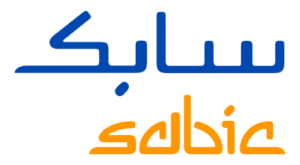NOT CURRENT YEAR

SABIC
Grade summary
In this year’s ranking, SABIC receives an additional five points, bringing it up from place 22 to 12 in the ChemScore ranking. Only about a quarter of the company’s revenue comes from EU or US markets, where information is available in public records. According to this data, SABIC has 23 hazardous substances in its portfolio. This is two less than last year, and the company is one out of only four in the ranking that has a phase-out strategy for hazardous chemicals. SABIC is a top performer when it comes to circularity; it markets mechanically recycled and renewable products, made from hazard-free PET. The only thing preventing the company from receiving all eight circularity points is the fact that it hasn’t reduced its hazardous waste. SABIC receives zero points in the Lack of Controversies category for its high penalties during the last decade, as well as due to a fire in a plant operated by one of its subsidiaries, which killed 12 workers.
How did we come to this score?
Opportunities for improvement
- Map and phase out persistent chemicals
SABIC produces one persistent chemical, which is one less than last year. These substances are also known as “forever chemicals” due to the fact that they do not break down in nature. Instead, these chemicals — which are linked to many negative health effects — build up over time. The consequences of these substances are becoming increasingly detrimental, not only for human health and the environment but also for investors. Investors risk stranded assets now that the regulatory speed is accelerating, and are also exposed to significant liability risks since more chemical companies are being sued for contamination. SABIC should therefore publish a time-bound phase-out plan of its last known persistent chemical and an annual progression report to go with it. - Reduce hazardous portfolio
Scientists agree that chemical pollution has crossed a planetary boundary and become an urgent global problem. This threatens the stability of global ecosystems upon which humanity depends, by damaging the biological and physical processes that underpin all life. Since SABIC has 23 hazardous chemicals in its production portfolio, a paramount improvement point for the company is to reduce this number. SABIC does have a phase-out strategy for hazardous chemicals, which it should develop further, for example by making the phase-out plans time-bound. If the company continues to produce any hazardous substances, it should present a rationale for its essential use, motivate the production volume, and state how much it spends on research and development to find a safer alternative. - Market safer alternatives
SABIC either does not have or does not market any safer alternatives in its portfolio. Safer alternatives replace the use of hazardous substances and are important to put an end to chemical pollution. The company should, therefore, start producing safer alternatives or market existing ones on an independent third-party platform. A good place to advertise is ChemSec’s Marketplace, where buyers and suppliers can find and market safer alternatives.

 Close
Close
 More
More



